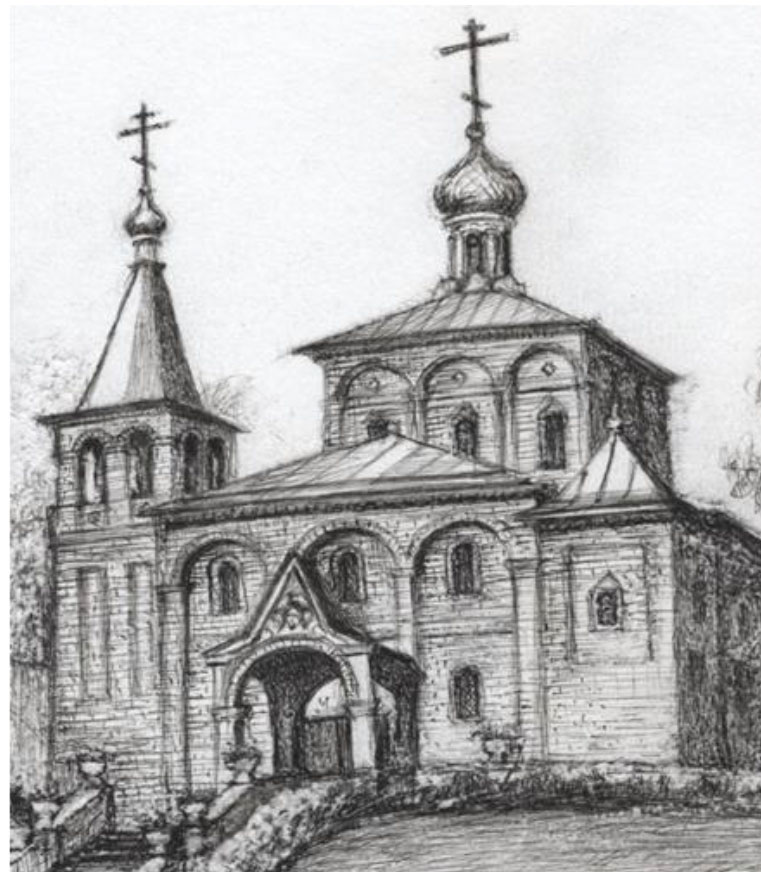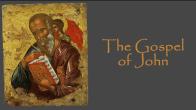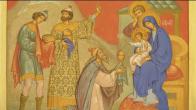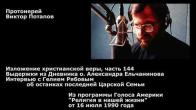You are here
CHRIST’S GLORIOUS RESURRECTION
Christ is Risen! Truly He is Risen!
Certainly, these are words of greeting referring to the days immediately following the Resurrection of Jesus Christ. Just as now, upon greeting someone, we exchange exceptionally important news, back then two people could meet on a Jerusalem street, and one would tell the other the news he had just heard, “Christ is Risen!” Having already heard about it, the other would respond, “Truly He is Risen!” Gradually, what we would now characterize as such a humane exchange of information, became news of victory, news testifiying to the faith for which one could give up even one’s life. That news went into the catacombs of Christian martyrdom. Formerly passed on only in whispers, it began to sound out as a hymn of victory from beneath the arches of Christian churches. Christians exchange that news, along with a triple kiss, beginning on the bright Paschal Night and until the day of Christ’s Ascension. Greeting every visitor with that news, “Christ is Risen, my joy,” Venerable St. Seraphim of Sarov expressed his teaching about man, his Christian anthropology, for with Christ’s Resurrection, each person becomes a joy.
People tell of an anti-religious debate held in our homeland in the years shortly after the revolution. A learned atheist made an extremely persuasive argument to reject God and Christ. The audience could be seen to waver. When the speaker concluded, an elderly priest ascended the platform, and asked to speak. Turning to the audience, with faith, he fervently exclaimed, “Brothers and sisters, Christ is Risen!” In response, there thundered a resounding and unanimous, “Truly He is Risen!” The joy of the Resurrection is enormous. However, it is achieved by way of the Cross. “...for by the Cross, joy hath come to all the world...”. Through His sacrifice on the Cross, Chirst reconciled God to mankind, and returned to man the joyous opportunity to defeat sin and death.
It was for this that Christ became man. He humbled Himself not only unto death, as the Apostle Paul states, but He also humbled Himself to be born an Infant, a Child, a Man. It was from there that the Way of the Cross begins, for not only did the Bethlehem cave reflect the light of the Nativity star, but also, upon that cave lay the shadow of the Cross. Almighty God lay in His mother’s lap. As someone once said, it was the first time that someone – in the person of the Virgin Mary – looked upon the Heavens by looking down! As it says in the Liturgy of St. Basil the Great, which we serve during Great Lent “through man, sin entered the world, and through sin, death.” (cf. Romans 5:12). Sin is born in the heart, in the soul, in the consciousness. However, the flesh, the body, is the conductor, the bearer of sin. By nature, our body is immortal, but by choosing sin, man submitted it to death and corruption, and deprived it of immortality. Christ, the Second Person of the Trinity, took upon Himself our flesh, of the Virgin Mary. Moreover, He took upon Himself the burden of the sins of all mankind, He took upon Himself mankind’s rejection of God, and assumed it to such a degree, assumed it so literally, that on the Cross that cloud of our sins sank Him, the Son of God, into the tragic chasm of abandonment by God. O God, O God, why hast Thou forsaken Me? (cf. Mark 15:34).
But it was here that the Mystery of our salvation took place. The Lamb of God, brought to the slaughter, took upon Himself, assumed, the sins of the world. He went through the valley of death. He destroyed the power of Hades. He was Risen in His human Flesh, and He raised both It and us to its original dignity, “at the right hand of God the Father.” Thus, it was not only our spirit, but also our body that received the great gift of Resurrection, the gift promised to all who believe on Christ the Son of God. “I look for the resurrection of the dead, and the life of the age to come.”
St. Seraphim would say “Christ is Risen, my joy,” to everyone — whether a righteous one, a sinner, a believer or non-believer, a kind or evil person, a friend or an enemy. “It is the day of Resurrection, and let us be enlightened by the Feast; let us embrace one another, and say ‘Brethren!’ And let us forgive those who hate us everything by the Resurrection” sings the Church in these most bright days. There is Christ’s key to the mystery of human relations, to the mystery of fraternal love, of peace, of universal forgiveness. Christ was resurrected for everyone. He opened the gates of His Kingdom for everyone. He called upon everyone to take part in a common work: the work of resurrection from the dead. That is why in Greek the word Liturgy means common work, for through that labor in common is laid down the way to that common goal, to our common Resurrection.
After Christ’s Incarnation and Resurrection, mankind had returned to it the promise of Divinity that had been given at the Creation. Like the ancient Romans, we tend to follow their favorite expression, “to err is human,” and to look at everything with human condescension and even disdain. That has no place in Christianity. In Christianity, following Christ’s Incarnation and in light of His being God-Man, everything that is truly human bears within it the pledge of Divinity. That truth is a joyous one. And in it is that to which our beloved St. Seraphim of Sarov bore witness: in the Incarnate and Resurrected Christ everyone is a joy, for Christ was Incarnate and Resurrected for everyone, for every person.
Christ is Risen! Truly He is Risen!
Archpriest George Benigsen
April 1984
PARISH LIFE
RECENT VIDEOS
Address of our Cathedral
Subscribe to our mailing list
While all the materials on this site are copyrighted, you may use them freely as long as you treat them
with respect and provide attribution on the Russian Orthodox Cathedral of St.John the Baptist of Washington DC.









